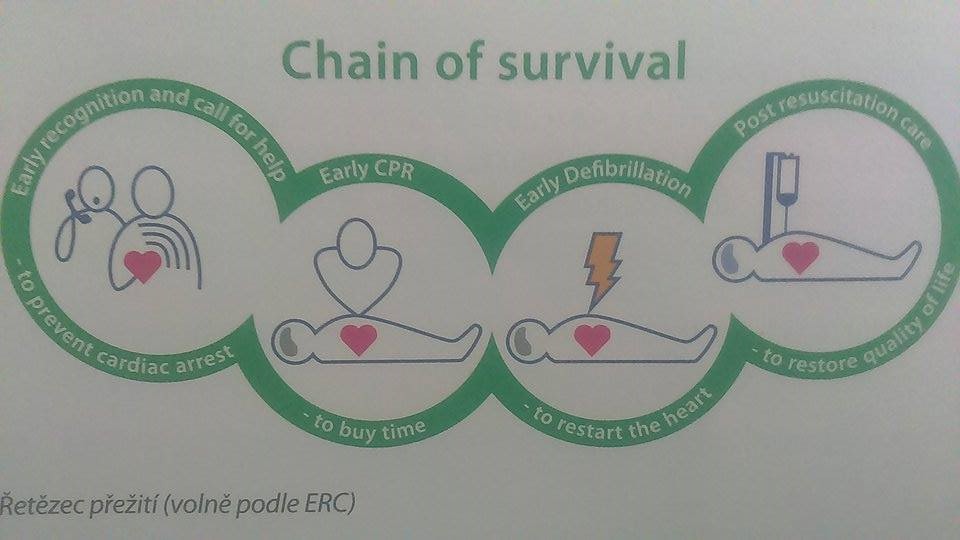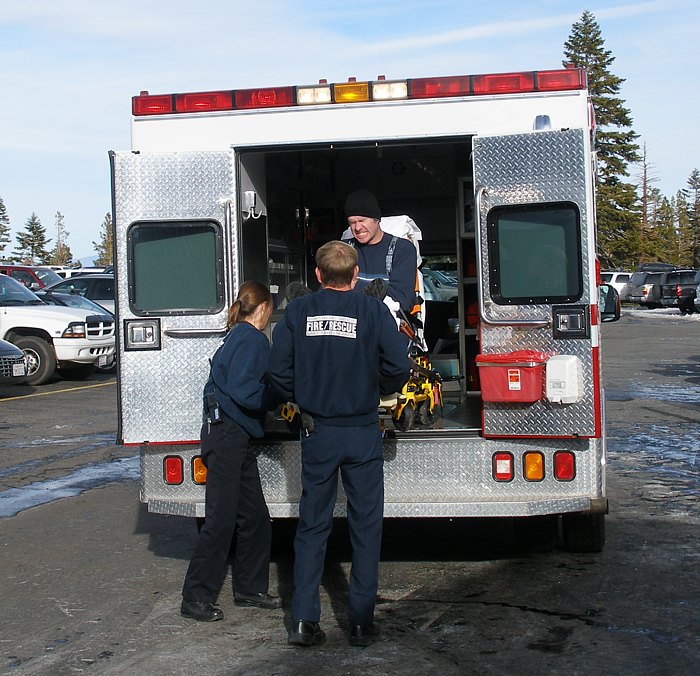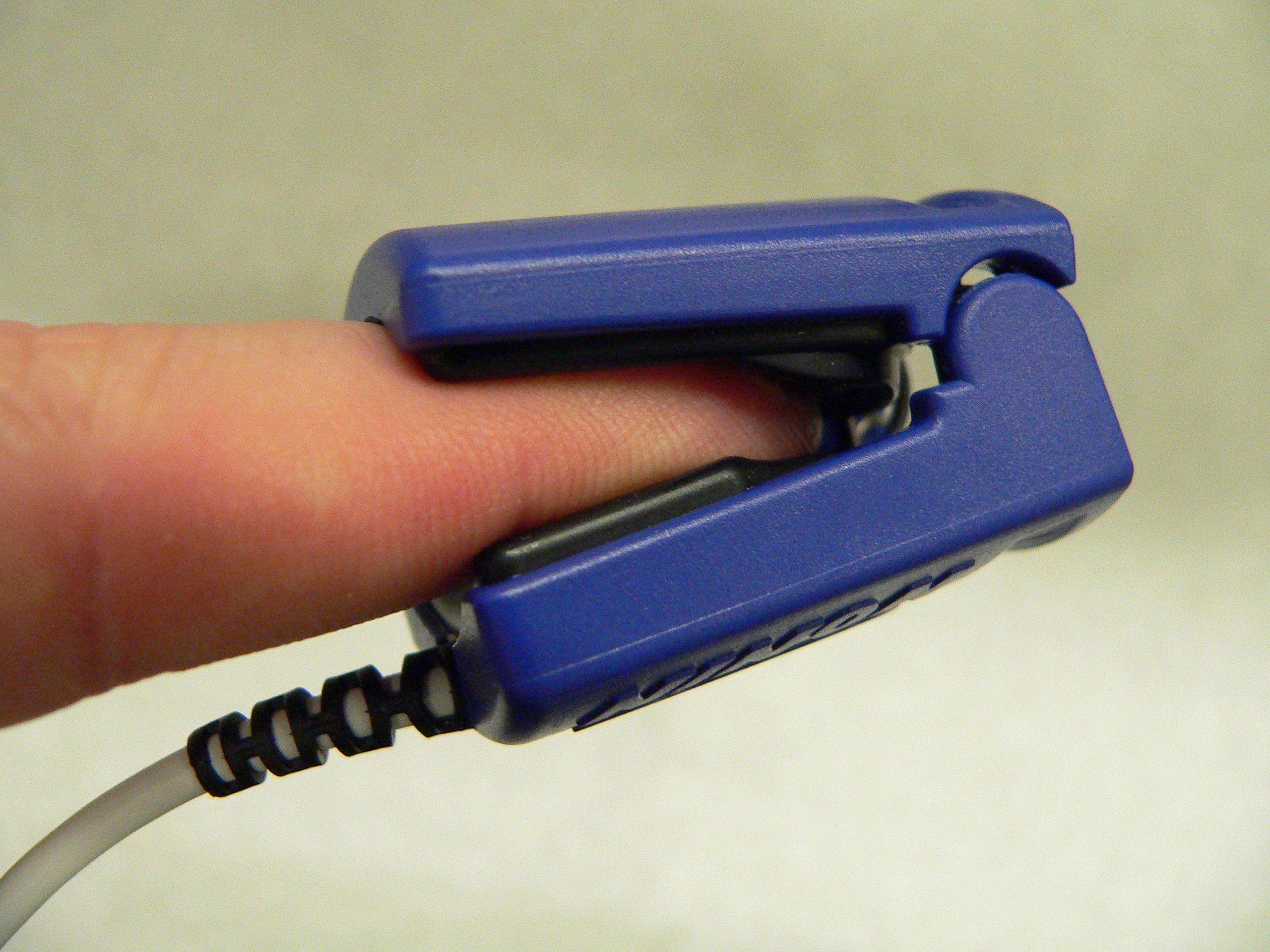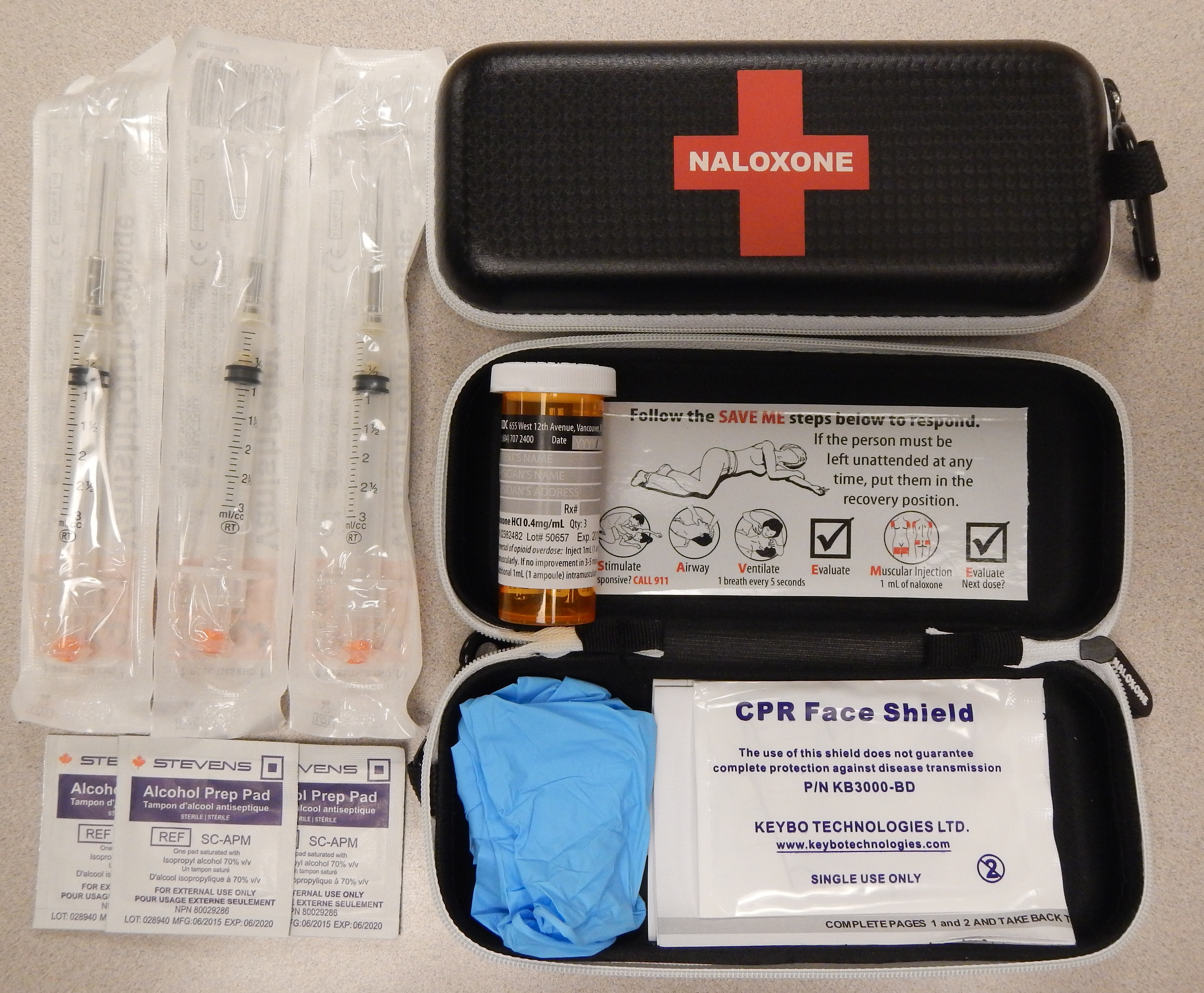|
EMT-B
Emergency Medical Technician is the entry level of Emergency Medical Technician (pre-hospital emergency medical provider) in the United States. EMTs are not trained to provide definitive medical care, but instead focus on rapid in-field treatment and transport to higher medical providers. EMTs work in conjunction with other medical providers such as paramedics, nurses, and physicians, as well as with other EMTs. When operating in the prehospital environment, their actions are governed by protocols and procedures set by their system's physician medical director. Education and training EMT training is regulated at both the state and federal level. At the federal level, the National Highway Traffic Safety Administration (NHTSA) has developed a minimum content and hour curriculum, but it is not binding on the states. This is known as the ''National Standard Curriculum''. Under the NHTSA curriculum, students receive 110 hours of lecture and lab time covering anatomy, physiology, legal ... [...More Info...] [...Related Items...] OR: [Wikipedia] [Google] [Baidu] |
Emergency Medical Responder Levels By State
In the United States, the licensing of prehospital emergency medical providers ( emergency medical technicians) (EMTs) and oversight of emergency medical services are governed at the state level. Each state is free to add or subtract levels as each state sees fit. Therefore, due to differing needs and system development paths, the levels, education requirements, and scope of practice of prehospital providers varies from state to state. Even though primary management and regulation of prehospital providers is at the state level, the federal government does have a model scope of practice including minimum skills for EMRs, EMTs, Advanced EMTs and Paramedics set through the National Highway Traffic Safety Administration (NHTSA). While states are able to set their own additional requirements for state certification, a quasi-national certification body exists in the form of the National Registry of Emergency Medical Technicians (NREMT). The NREMT offers a national certification based on t ... [...More Info...] [...Related Items...] OR: [Wikipedia] [Google] [Baidu] |
Basic Life Support
Basic life support (BLS) is a level of medical care which is used for patients with life-threatening illnesses or injuries until they can be given full medical care by advanced life support providers (paramedics, nurses, physicians). It can be provided by trained medical personnel, such as emergency medical technicians, and by qualified bystanders. Background The International Liaison Committee on Resuscitation (ILCOR) was formed in 1992 to coordinate the efforts of resuscitation worldwide. The ILCOR representatives come from various countries such as the United States, Canada, Australia, New Zealand, and from the European, Asian, and African continents. In 2000, the committee published the first resuscitation guideline. In 2005, the committee published International Consensus on Cardiopulmonary resuscitation (CPR) and Emergency Cardiovascular Care (ECC) Science with Treatment Recommendations. Since 2010, the committee has provided materials for regional resuscitation providers su ... [...More Info...] [...Related Items...] OR: [Wikipedia] [Google] [Baidu] |
Ambulances
An ambulance is a medically equipped vehicle which transports patients to treatment facilities, such as hospitals. Typically, out-of-hospital medical care is provided to the patient during the transport. Ambulances are used to respond to medical emergencies by emergency medical services (EMS). For this purpose, they are generally equipped with flashing warning lights and sirens. They can rapidly transport paramedics and other first responders to the scene, carry equipment for administering emergency care and transport patients to hospital or other definitive care. Most ambulances use a design based on vans or pickup trucks. Others take the form of motorcycles, buses, limousines, aircraft and boats. Generally, vehicles count as an ambulance if they can transport patients. However, it varies by jurisdiction as to whether a non-emergency patient transport vehicle (also called an ambulette) is counted as an ambulance. These vehicles are not usually (although there are exception ... [...More Info...] [...Related Items...] OR: [Wikipedia] [Google] [Baidu] |
Nasopharyngeal Airway
In medicine, a nasopharyngeal airway, also known as an NPA, nasal trumpet (because of its flared end), or nose hose, is a type of ''airway adjunct'', a tube that is designed to be inserted through the nasal passage down into the posterior pharynx to secure an open airway. It was introduced by in 1958. When a patient becomes unconscious, the muscles in the jaw commonly relax and can allow the tongue to slide back and obstruct the airway. This makes airway management necessary, and an NPA is one of the available tools. The purpose of the flared end is to prevent the device from becoming lost inside the patient's nose. Sizes As with other catheters, NPAs are measured using the French catheter scale, but sizes are usually also quoted in millimeters. Typical sizes include: 6.5 mm/28FR, 7.0 mm/30FR, 7.5 mm/32FR, 8.0 mm/34FR, and 8.5 mm/36FR. Indications and Contraindications These devices are used by emergency care professionals such as EMTs and paramedics ... [...More Info...] [...Related Items...] OR: [Wikipedia] [Google] [Baidu] |
Automated External Defibrillator
An automated external defibrillator (AED) is a portable electronic device that automatically diagnoses the life-threatening cardiac arrhythmias of ventricular fibrillation (VF) and pulseless ventricular tachycardia, and is able to treat them through defibrillation, the application of electricity which stops the arrhythmia, allowing the heart to re-establish an effective rhythm. With simple audio and visual commands, AEDs are designed to be simple to use for the layperson, and the use of AEDs is taught in many first aid, certified first responder, and basic life support (BLS) level cardiopulmonary resuscitation (CPR) classes. The portable version of the defibrillator was invented in the mid-1960s by Frank Pantridge in Belfast, Northern Ireland and the first automatic, public use, defibrillator was produced by the Cardiac Resuscitation Company in the late 1970s. The unit was launched under the name Heart-Aid. Indications Conditions that the device treats An automated external ... [...More Info...] [...Related Items...] OR: [Wikipedia] [Google] [Baidu] |
Emergency Medical Technician
An emergency medical technician (EMT), also known as an ambulance technician, is a health professional that provides emergency medical services. EMTs are most commonly found working in ambulances. In English-speaking countries, paramedics are a separate profession that has additional educational requirements, qualifications, and scope of practice. EMTs are often employed by private ambulance services, municipal EMS agencies, governments, hospitals, and fire departments. Some EMTs are paid employees, while others (particularly those in rural areas) are volunteers. EMTs provide medical care under a set of protocols, which are typically written by a physician. Hazard controls EMTs are exposed to a variety of hazards such as lifting patients and equipment, treating those with infectious disease, handling hazardous substances, and transportation via ground or air vehicles. Employers can prevent occupational illness or injury by providing safe patient handling equipment, impleme ... [...More Info...] [...Related Items...] OR: [Wikipedia] [Google] [Baidu] |
Medical Director
A medical director is a physician who provides guidance and leadership on the use of medicine in a healthcare organization. These include the emergency medical services, hospital departments, blood banks, clinical teaching services and others. A medical director devises the protocols and guidelines for the clinical staff and evaluates them while they are in use. Emergency medical services The role of a medical director in the emergency medical services (EMS) varies by which type of system is in use. Franco-German model The first model, arguably the oldest, is generally described as the Franco-German model. This model is physician-led, and those personnel who serve emergencies from ambulances are often place in minor, supporting roles. There is ample evidence indicating that at the turn of the 20th century, many North American hospital-based ambulances in larger centres were staffed by ambulance surgeons; physicians who responded in the ambulance and provided care in a manner which ... [...More Info...] [...Related Items...] OR: [Wikipedia] [Google] [Baidu] |
Oximetry
Pulse oximetry is a noninvasive method for monitoring a person's oxygen saturation. Peripheral oxygen saturation (SpO2) readings are typically within 2% accuracy (within 4% accuracy in 95% of cases) of the more accurate (and invasive) reading of arterial oxygen saturation (SaO2) from arterial blood gas analysis. But the two are correlated well enough that the safe, convenient, noninvasive, inexpensive pulse oximetry method is valuable for measuring oxygen saturation in clinical use. The most common approach is ''transmissive pulse oximetry''. In this approach, a sensor device is placed on a thin part of the patient's body, usually a fingertip or earlobe, or an infant's foot. Fingertips and earlobes have higher blood flow rates than other tissues, which facilitates heat transfer. The device passes two wavelengths of light through the body part to a photodetector. It measures the changing absorbance at each of the wavelengths, allowing it to determine the absorbances due to t ... [...More Info...] [...Related Items...] OR: [Wikipedia] [Google] [Baidu] |
Emergency Medical Services In The United States
In the United States, emergency medical services (EMS) provide out-of-hospital acute medical care and/or transport to definitive care for those in need. They are regulated at the most basic level by the National Highway Traffic Safety Administration, which sets the minimum standards that all states' EMS providers must meet, and regulated more strictly by individual state governments, which often require higher standards from the services they oversee. Wide differences in population density, topography, and other conditions can call for different types of EMS systems; consequently, there is often significant variation between the Emergency Medical Services provided in one state and those provided in another. Organization and funding Land ambulance EMS delivery in the US can be based on various models. While most services are, to some degree, publicly funded, the factor which often differentiates services is the manner in which they are operated. EMS systems may be directly ope ... [...More Info...] [...Related Items...] OR: [Wikipedia] [Google] [Baidu] |
National Association Of Emergency Medical Technicians
The National Association of Emergency Medical Technicians is an American professional association representing Emergency medical technicians and paramedics A paramedic is a registered healthcare professional who works autonomously across a range of health and care settings and may specialise in clinical practice, as well as in education, leadership, and research. Not all ambulance personnel are p .... Lobbying In March 2013, the association unsuccessfully lobbied for the Veteran Emergency Medical Technician Support Act of 2013, which would have amended the Public Health Service Act. References External links * {{DEFAULTSORT:National Association Of Emergency Medical Technicians Allied health professions-related professional associations 501(c)(6) nonprofit organizations ... [...More Info...] [...Related Items...] OR: [Wikipedia] [Google] [Baidu] |
Emergency Medical Services In The United States
In the United States, emergency medical services (EMS) provide out-of-hospital acute medical care and/or transport to definitive care for those in need. They are regulated at the most basic level by the National Highway Traffic Safety Administration, which sets the minimum standards that all states' EMS providers must meet, and regulated more strictly by individual state governments, which often require higher standards from the services they oversee. Wide differences in population density, topography, and other conditions can call for different types of EMS systems; consequently, there is often significant variation between the Emergency Medical Services provided in one state and those provided in another. Organization and funding Land ambulance EMS delivery in the US can be based on various models. While most services are, to some degree, publicly funded, the factor which often differentiates services is the manner in which they are operated. EMS systems may be directly ope ... [...More Info...] [...Related Items...] OR: [Wikipedia] [Google] [Baidu] |
Naloxone
Naloxone, sold under the brand names Narcan (4 mg) and Kloxxado (8 mg) among others, is a medication used to reverse or reduce the effects of opioids. It is commonly used to counter decreased breathing in opioid overdose. Effects begin within two minutes when given intravenously, and within five minutes when injected into a muscle. The medicine can also be administered by spraying it into a person's nose. Naloxone commonly blocks the effects of opioids for 30 to 90 minutes. Multiple doses may be required, as the duration of action of some opioids is greater than that of naloxone. Administration to opioid-dependent individuals may cause symptoms of opioid withdrawal, including restlessness, agitation, nausea, vomiting, a fast heart rate, and sweating. To prevent this, small doses every few minutes can be given until the desired effect is reached. In those with previous heart disease or taking medications that negatively affect the heart, further heart problems have occurred. ... [...More Info...] [...Related Items...] OR: [Wikipedia] [Google] [Baidu] |




